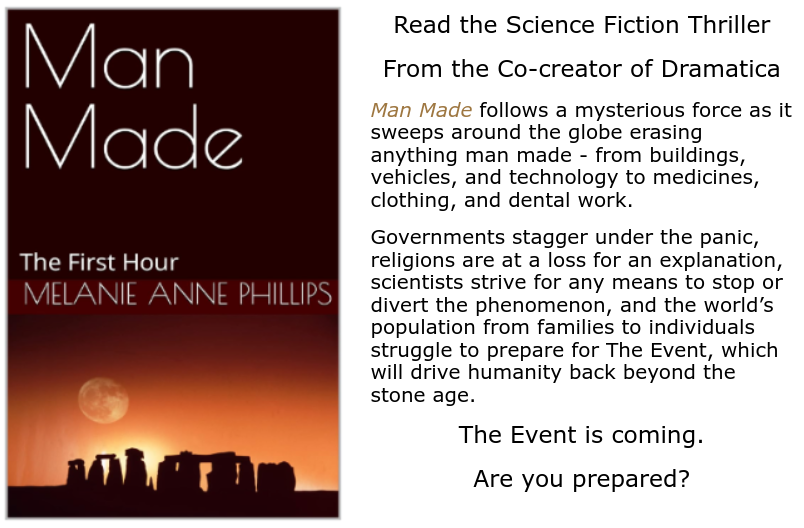
Writng a good plot twist requires two things:
- Coming up with an unexpected change in direction of your plot that alters the course of your story.
- Keeping that information from your readers until just the right moment to reveal it for maximum surprise.
As a technique, it is far easier to build a plot twist on your existing plot than to imagine one as a lone outlier and then try to connect it to the main.
To begin, suppose we have a story about a Marshall in an old west town who must overcome a notorious gang.
Rather than trying to invent a twist out of nowhere, ask a question you haven’t answered yet about your plot.
Question:
How does the Marshall first find out about the gang’s activities?
Now, let your Muse run wild and come up with as many potential answers as she can – from the sublime to the ricidulous
Answers:
1. The gang rides into town hootin’ and hollarin’ (pretty typical)
2. He is told about the situation, right after he accepts the job and pins on the badge. (minor twist)
3. He saw a newspaper account of the town’s gang problem and came there on his own to get the job to clean up the gang. (minor twist)
4. The gang sends a telegram to the marshall’s home to taunt him by letting him know they are in town shaking it down. (uncommnon twist – not major, but unexpected)
Okay – none of these are particularly “oh, wow!” but this is just the first step in the technique. Now, you want to pick one of those scenarios (which has added to your plot) and ask another question to advance the potential of your plot twist into even more surprising growund.
For example, let’s pick the following to develop from our initial answers to the initial question:
Answer 3: He saw a newspaper account of the town’s gang problem and came there on his own to get the job to clean up the gang.
Now ask questons about that answer, as you did before, but this time you’ll be farther along your plot thread, giving it even more of a twist.
Questions:
1. Where was he when he saw the newspaper?
2. Has he done this kind of thing before?
3. Why does he want to interfere?
4. What makes him think he is qualified to do anything about the problem?
5. Does he notify the town’s mayor or governing body before he shows up?
Then, you repeat the second “creative” step with your Muse and provide answers.
Example:
Question 2. Has he done this kind of thing before?
Answers:
1. Yes, he is independently wealthy and does this all the time as a hobby.
2. Yes, one time. His family was killed when he was a child and in his first adventure, he read a newspaper account of a child who was made an orphan due to a gang’s violence in a town in the East. He brought the gang to justice and found a foster home for the child. It was so fulfilling, his ordinary job has been miserable since, and this new article has made him realize he needs to step forward to give his live meaning.
I could go on and on, but you get the idea.
Now, through this exercise, what twists have we created for our story? Perhaps these:
1. A scene showing the Marshall as a young boy when his family was killed (by who and how and where can all be figured out using the Creative Two-Step).
2. A scene showing the Marshall see the first article and decide to get involved.
3. Several scene, perhaps in a montage or in a scrapbook of how that first adventure went.
4. A scene of him encountering this new newspaper article and how it affects him.
5. A scene of him quitting his job (how much he needs the money, what kind of job, and so on can be created using the two-step)
6. A scene of him arriving at the town.
7. How he gets the job (again, use the two-step to come up with ideas for this)
8. His first encounter with the gang (casual, antagonistic, high or low tension, anybody get hurt?, did the gang know he was the Marshall when they first encounter?)
The benefit of this technique is that by asking a questions, then providing multiple potential answers, then asking another question about the one you chose, your plot grows and twists at the same time, suggesting new scenes, new characters, and new thematic issues along the way.
Bottm line – don’t get mired in a random process of trying to force yourself to invent a startling plot twist. Simply apply this technique and let the plot twists suggest themselves.
Melanie Anne Phillips
Creator, StoryWeaver
Co-creator, Dramatica
Here are some links to some good stuff for writers:
My main website for writers – https://storymind.com
A library of the hundreds of writing tips I’ve penned – https://storymind.com/blog
My author page on Amazon – https://www.amazon.com/-/e/B0744CGDLV
My YouTube channel with hundreds of writing tips and classes:
https://www.youtube.com/c/Storymind
My store for writers – https://storymind.3dcartstores.com/
And take the time to try my StoryWeaver story development online app RISK FREE for 90 days! Details at https://storymind.com/storyweaver.htm











You must be logged in to post a comment.